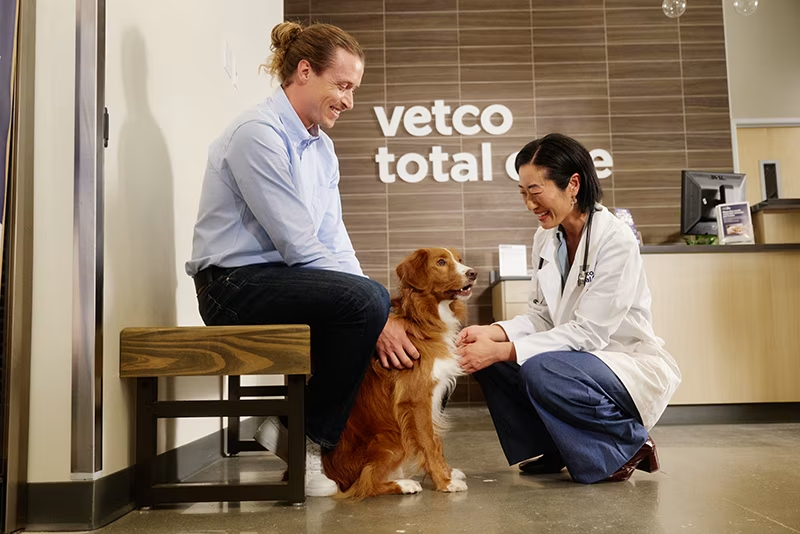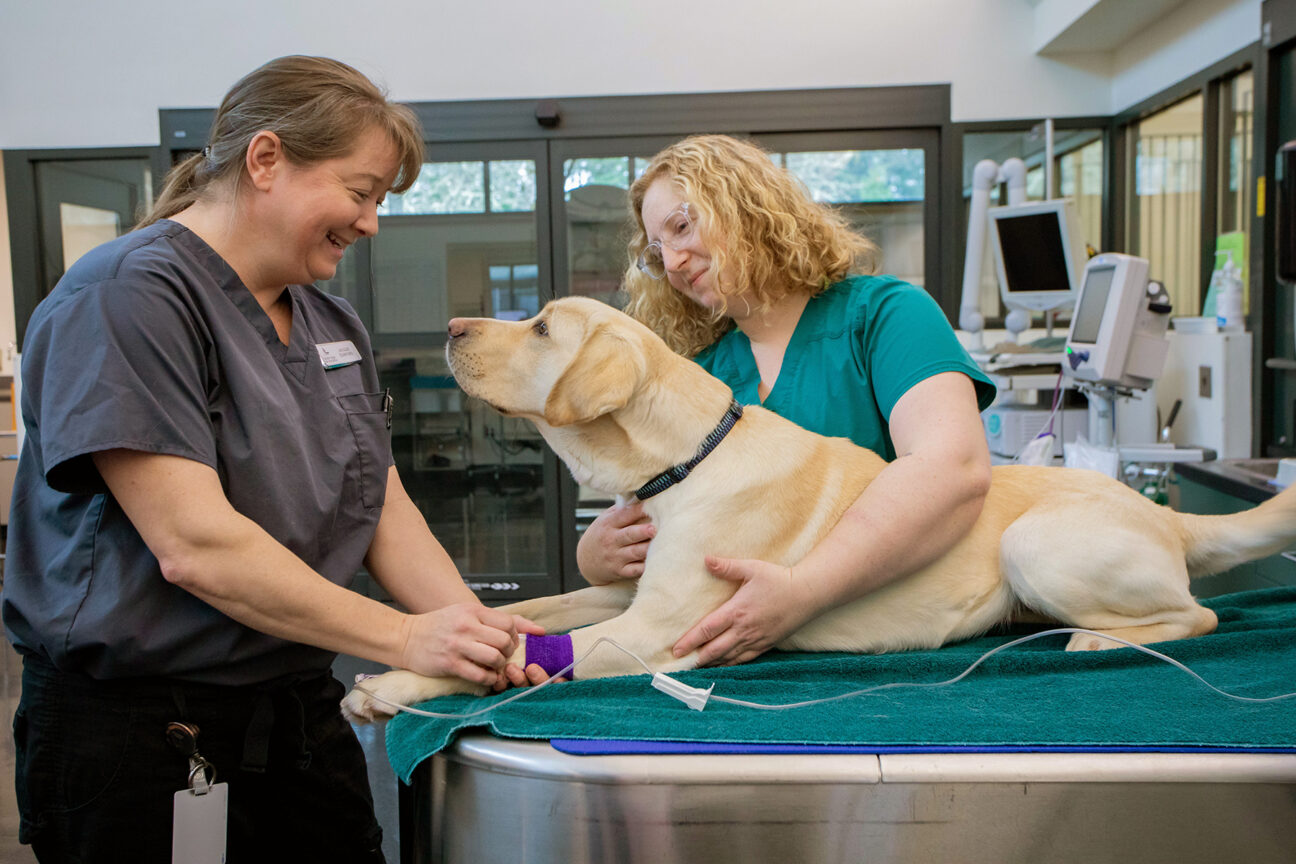Signs Your Dog Might Need canine tplo surgery: Vet-Approved Checklist
Signs Your Dog Might Need canine tplo surgery: Vet-Approved Checklist
Blog Article
Everything About Veterinarian Surgical Procedure: Recognizing the Value of Professional Take Care Of Your Family pets
Vet surgical procedure is an essential element of pet dog health care. It incorporates different procedures, from routine elective surgical treatments to immediate interventions. Comprehending the complexities of these surgical procedures can aid family pet owners make informed choices. The preparation, implementation, and recuperation phases are essential for making certain the wellness of animals. With correct knowledge, proprietors can browse the intricacies of vet care. What variables should be considered prior to a pet dog undertakes surgical procedure?
Kinds of Veterinarian Surgeries
When a pet dog needs surgical treatment, recognizing the numerous types of vet surgical treatments can assist animal owners make informed decisions. Veterinary surgeries can be generally classified right into 3 major kinds: optional, urgent, and emergency surgeries. Optional surgeries, such as spaying or neutering, are prepared procedures that are not right away serious. Urgent surgeries, like those for foreign body removal, must be performed quickly yet are not life-threatening in the moment. Emergency situation surgical procedures, such as those resolving severe injury or internal bleeding, are critical and call for instant attention.Additionally, surgeries can differ in intricacy, varying from minimally intrusive laparoscopic procedures to more extensive open surgical procedures. Each kind of surgical procedure brings its very own risks and recovery processes. Recognizing these groups permits pet dog owners to take part in purposeful discussions with vets, resulting in far better results for their precious animals.
Planning for Your Family pet's Surgical treatment
Getting ready for a pet dog's surgical procedure involves a detailed list to ensure all essentials are covered. Reliable communication with the vet is important for comprehending the procedure and any necessary pre-operative actions - veterinary cardiologist near me. In addition, having clear post-operative care guidelines will help owners supply the best assistance for their recouping pets
Pre-Surgery Checklist Essentials
Guaranteeing a smooth surgical experience for a family pet needs cautious prep work and interest to information. A pre-surgery list is important for family pet proprietors to follow. First, verifying the set up surgical treatment day and time is vital. Proprietors must additionally confirm that their animal has actually fasted according to the veterinarian's guidelines, commonly for 8-12 hours before surgery. Gathering essential medical documents, consisting of vaccination history, is necessary for the veterinarian's review. It is likewise advisable to prepare a comfortable space in the house for the family pet's healing after surgical procedure. Owners should have a plan for transport to and from the veterinary facility, making certain that the pet dog is safe and secure and comfortable throughout the journey. Following these steps can substantially boost the surgical experience.
Connecting With Your Veterinarian

Efficient interaction with the veterinarian is necessary for a successful surgical experience for family pets. Proprietors ought to be prepared to review their pet dog's medical history, consisting of any pre-existing conditions, drugs, and allergic reactions. This info helps the vet evaluate threats and customize the medical strategy accordingly. In addition, pet dog owners need to ask inquiries pertaining to the procedure, anesthesia, and expected outcomes to ensure they fully comprehend the procedure. Making clear any doubts can relieve stress and anxiety for both the animal and the owner. It is likewise crucial to connect any kind of behavior adjustments or problems observed in the animal leading up to the surgical procedure. Inevitably, clear discussion cultivates trust fund and partnership, ensuring that animals obtain the most effective feasible care during their surgical trip.
Post-Operative Treatment Instructions
After going over the operation with the veterinarian, family pet owners ought to concentrate on post-operative treatment directions to help with a smooth recovery for their animals. These instructions typically consist of keeping an eye on the surgical site for indicators of infection, such as inflammation or discharge. Pet dogs might require to be maintained tranquil and confined to avoid too much activity that can interrupt recovery. Discomfort management is crucial, so proprietors ought to comply with the vet's guidance on providing medicines. Additionally, nutritional restrictions might be advised to avoid stomach upset. Regular follow-up appointments are essential to assure correct healing and deal with any type of worries. By sticking to these post-operative care guidelines, pet owners can greatly add to their animal's healing and general health.
The Surgical Refine Explained
The surgical process for pet dogs encompasses crucial actions that guarantee their safety and recuperation. Pre-surgery preparations are necessary for minimizing dangers, while post-operative treatment guidelines play an important duty in promoting healing. Recognizing these elements helps pet dog owners browse the surgical experience much more properly.
Pre-Surgery Preparations
Prior to a family pet undertakes surgical procedure, several crucial preparations need to happen to guarantee a risk-free and successful treatment. A complete veterinary examination is necessary to examine the pet dog's overall wellness and determine any type of prospective dangers. This might consist of blood examinations, imaging, or various other diagnostics. The veterinarian will likewise discuss anesthesia options customized to the animal's specific requirements. Additionally, family pet owners are commonly advised to keep food and water for a specified time before surgical procedure to reduce the threat of problems during anesthetic. It's crucial for owners to provide a complete case history, consisting of any medicines or allergic reactions, making certain the medical team has all required details. Appropriate communication and adherence to pre-surgery standards can considerably improve the end result of the treatment.
Post-Operative Treatment Standards
Appropriate post-operative treatment is crucial for making sure an animal's recovery following surgical treatment. After the procedure, family pets need to be kept an eye on closely for any indicators of problems, such as extreme bleeding, swelling, or uncommon behavior. It is very important to comply with the vet's instructions relating to medications, including painkiller and antibiotics. Pets ought to be kept in a silent, comfy setting to lower stress and anxiety and advertise recovery. Restricting activity is crucial; short, leashed strolls might be necessary, however leaping or running need to be stayed clear web link of. Normal follow-up appointments must be set up to assess the healing procedure. In addition, the surgical site should be kept tidy and completely dry, with any kind of signs of infection reported to a veterinarian promptly. Sticking to these guidelines improves recuperation results.
Anesthesia and Discomfort Management
Effective anesthetic and discomfort management are vital parts of vet surgical procedure, making certain that pets stay comfy and secure throughout the procedure. Veterinarians evaluate each animal's private demands, taking into consideration factors such as age, weight, wellness condition, and the kind of surgical procedure being performed.Anesthesia methods typically include a combination of pre-anesthetic medications, induction representatives, and inhalant anesthetics, permitting exact control over the pet's degree of consciousness. Tracking throughout surgical treatment is crucial; vets continuously observe vital indicators to resolve any type of potential complications promptly.Pain management approaches may include opioids, non-steroidal anti-inflammatory medicines (NSAIDs), and local anesthetics, tailored to the family pet's certain circumstance. This diverse method helps minimize discomfort and promotes a smoother medical experience. By focusing on effective anesthesia and pain administration, veterinary professionals enhance the overall welfare of animals going through operations, guaranteeing they obtain the highest possible criterion of treatment.
Post-Operative Treatment and Recovery
Following surgical procedure, the emphasis changes to post-operative treatment and recovery, which is necessary for guaranteeing a pet dog's safe return to typical activities. During this period, animals need a silent, comfortable setting to aid recovery. Owners need to very closely monitor their pets for any type of signs of pain or unusual behavior.Veterinary guidelines usually include certain instructions connected to drug management, injury care, and nutritional adjustments. It is essential to abide by these referrals to decrease difficulties and promote recovery. Family pets might require to be restricted from energetic tasks, such as running or leaping, throughout their recovery period (animal emergency care bellingham).Regular follow-up visits with the vet permit for surveillance of the pet's progress and prompt changes to the care strategy. Giving emotional assistance and companionship can additionally improve a family pet's recuperation experience, aiding to reduce tension and stress and anxiety. Generally, attentive post-operative treatment plays a significant role in accomplishing a successful recovery
Acknowledging Problems After Surgical Procedure
Just how can pet dog proprietors identify problems after surgery? Awareness of specific signs is crucial for guaranteeing the well-being of family pets throughout recovery. Usual indicators consist of excessive swelling, soreness, or discharge at the surgical site, which might signify infection. Furthermore, consistent pain, indicated by whimpering or hesitation to move, should motivate instant interest. Adjustments in cravings or water intake can also indicate difficulties; a decline in these actions might indicate discomfort or distress.Moreover, pet dog proprietors must monitor their family pets for any type of uncommon actions, such as lethargy or problem breathing, as these can be signs of major problems. Vomiting or looseness of the bowels vets for pets complying with surgical treatment might call for immediate veterinary examination. Identifying these complications early can considerably impact a family pet's recovery procedure, stressing the importance of watchfulness and prompt interaction with a veterinarian for any kind of worrying signs.
The Duty of Vet Specialists in Surgical Care
Vet specialists play an important function in guaranteeing the safety and success of procedures for animals, particularly complying with surgery when monitoring and care are critical. These specialists consist of vets, veterinary professionals, and support personnel, every one of whom contribute specialized abilities to the surgical process.Before surgical treatment, veterinarians carry out extensive analyses to analyze the pet's health, guaranteeing that any hidden conditions are managed. During the procedure, the medical group offers anesthesia, preserves clean and sterile settings, and monitors key indicators, very important for minimizing risks.Post-operative care is similarly substantial; veterinary experts observe for problems, handle pain, and overview proprietors on healing practices. Their experience enables them to recognize early signs of distress or infection, guaranteeing timely intervention. Ultimately, the collaborative initiatives of veterinary professionals in surgical care promote a safe setting, promoting the health of animals throughout the medical journey.

Frequently Asked Questions
Just how Do I Select the Right Vet Surgeon for My Animal?
Selecting the appropriate vet doctor entails investigating qualifications, reading reviews, and evaluating the facility's environment. It is vital to mirror on the surgeon's experience with certain treatments and click here for info their interaction style when choosing.
What Are Usual Misconceptions Concerning Vet Surgeries?
Typical misunderstandings concerning vet surgical procedures include beliefs that they are constantly high-risk, unneeded, or only for emergencies. Many pet owners undervalue the benefits of preventative procedures and the ability entailed in veterinary surgical treatment.
How Much Will My Family pet's Surgical treatment Price?
The cost of a family pet's surgical treatment can vary considerably based on variables such as the kind of treatment, the veterinarian's experience, and geographical place (emergency vet near me). Typically, expenditures range from a few hundred to numerous thousand bucks

Can My Pet Eat Prior To Surgical Procedure?
Prior to surgery, it is normally suggested that pets avoid from consuming for a details period. This fasting helps in reducing the danger of problems during anesthetic. Owners need to consult their vet for precise guidelines customized to their animal's needs.
What happens if My Pet Dog Has Pre-Existing Wellness Conditions?
When an animal has pre-existing health problems, it's essential for the vet to examine these aspects before surgical treatment. This examination guarantees suitable safety measures are taken, lessening risks and enhancing the pet dog's general security throughout the procedure.
Report this page